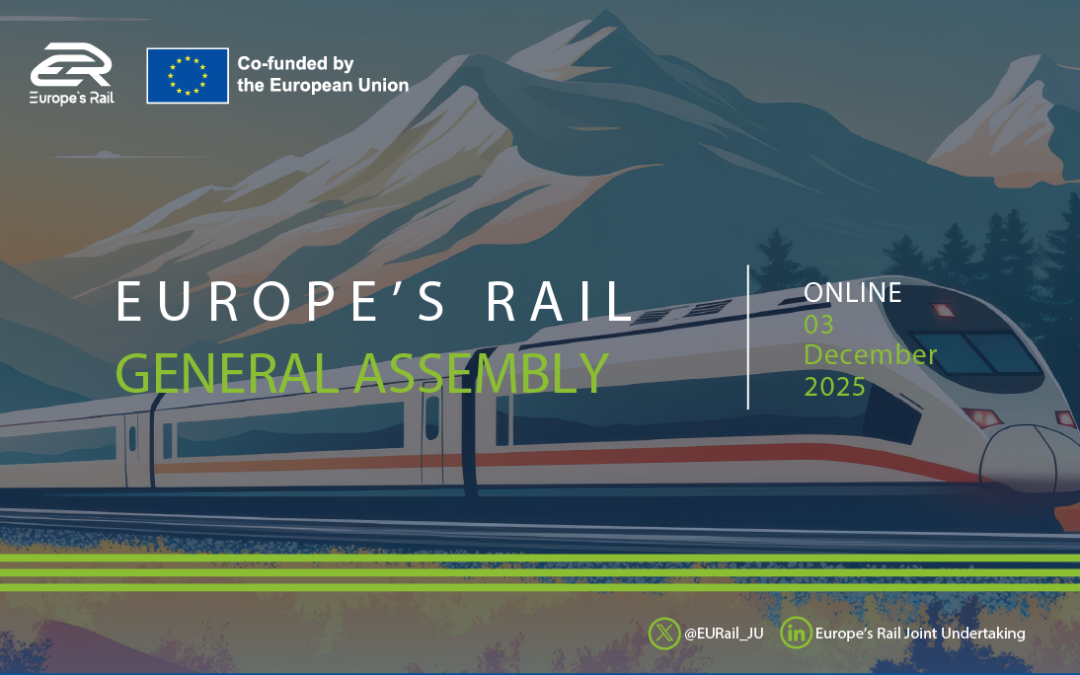FP2-R2DATO D21.2: System requirements of ASTP system FP2-R2DATO advances rail safety and efficiency by developing the...
Specification of formal development demonstrator
Description: This deliverable describes the rationale and planned structure of the formal methods demonstrator, which is an experiment in exploiting the use of formal analysis for improving the quality of standard interfaces and system requirements definitions. This deliverable is the base for Deliverable D2.5 “Formal development demonstrator prototype, final release”. The data resulting from the controlled experiment will be exploited in Deliverable 2.6 “Specification of costs / benefits analysis and learning curves, final release”.
Target audience: Infrastructure management companies, Suppliers
How it brings us closer to achieving better rail for Europe: The described results are of interest for infrastructure managers and standardization bodies to make informed choices on the process to be followed to create higher quality standards and system requirements specifications. The need of high-quality standard interfaces is in fact widely recognised by Shift2Rail as a necessary step to reduce to costs of designing, creating and safely operating complex railway infrastructures. Several activities (EULYNX, ERTMS) have been set up precisely with this purpose. The exploitation of formal methods during this phase of standardization and system requirements definition is being recognized to potentially become an essential component to raise the quality of the produced specifications.
More information on this topic: 4SECURails
Case study requirements and specification
Description: This deliverable describes the case study of standard interface to be used for the experiment of formal analysis (the formal methods demonstrator). This deliverable is the base for Deliverable D2.5 “Formal development demonstrator prototype, final release”. The data resulting from the controlled experiment will be exploited in Deliverable 2.6 “Specification of costs / benefits analysis and learning curves, final release”.
Target audience: Infrastructure management companies, Suppliers
How it brings us closer to achieving better rail for Europe:
The need of high-quality standard interfaces is in fact widely recognised by Shift2Rail as a necessary step to reduce to costs of designing, creating and safely operating complex railway infrastructures, and several activities (EULYNX, ERTMS) have been set up precisely with this purpose. The exploitation of formal methods during this phase of standardization and system requirements definition is being recognized that might become an essential component to raise the quality of the produced specifications.
More information on this topic: 4SECURail
Formal development demonstrator prototype, final release
Description: This deliverable constitutes an experiment (the demonstrator) in exploiting the use of formal analysis for improving the quality of standard interfaces and system requirements definitions. This deliverable builds upon Deliverable D2.3 “Case study requirements and specification”, and is the base for Deliverable D2.6 “Specification of costs / benefits analysis and learning curves, final release”.
Target audience: Infrastructure management companies, Suppliers
How it brings us closer to achieving better rail for Europe: The described results are of interest to infrastructure managers and standardization bodies in order to make informed choices on the process to be followed to create higher quality standards and system requirements specifications. The need of high-quality standard interfaces is in fact widely recognised by Shift2Rail as a necessary step to reduce to costs of designing, creating and safely operating complex railway infrastructures. Several activities (EULYNX, ERTMS) have been set up precisely with this purpose. The exploitation of formal methods during this phase of standardization and system requirements definition is being recognized to be an essential component to raise the quality of the produced specifications.
More information on this topic: 4SECURail
Specification of cost/benefit analysis and learning curves, 1st release
Description: This deliverable starts the process to identify – by means of a Cost-Benefit Analysis (CBA) – the economic impact of the use of formal methods (FM) in the development of standard interfaces, guidelines and specifications in the railway safety domain, against the Baseline Scenario represented by no use of formal methods. The process runs in parallel to the other 4SECURail WP2 activities, which include the prototyping of a FM Demonstrator to be exercised with a selected case study. A preliminary identification of relevant categories of costs and benefits for the CBA has been performed. Cost and benefit categories, their magnitude and economic significance have been discussed within the 4SECURail WP2 partnership and submitted to experts. The identification has been made among economic items for which a difference between Baseline and Project scenario is likely occurring. Relevant measurement units have been identified. The quantitative assessment of costs and benefits (D2.6 in November 2021) is the basis for the calculation of the feasibility and convenience indicators that constitute the outcome of the CBA. In line with this main objective, 4SECURail has identified a case study which is due to represent one of the most impactful operation on which the adoption of FM may generate benefits for IMs and other stakeholders involved in its development.
Target audience: Infrastructure management companies, Suppliers
How it brings us closer to achieving better rail for Europe: The use of FM in the railway context covers many distinct aspects, from the definition of verifiable requirements to the construction of a more affordable and efficient development process. The definition of cost and benefit categories connected to the use of Formal Methods in rail safety domain will enlighten – with quantitative elements – opportunities connected to the use of such methods in the development of guidelines for the specification of requirements for rail safety interfaces and products.
More information on this topic: 4SECURail
CSIRT model dedicated to railway, final release
DOWNLOAD HERE
Description: This deliverable provides a design of the 4SECURail output on the CSIRT model for the European railway sector. The CHIRP4Rail concept – Collaborative tHreat Intelligence Platform for Rail – aims to coordinate the different Rail Operators of Essential Services’ (OES) security teams in sharing cross border threat/incident information. In such a scenario, the model must clearly determine what can be shared, with whom, under what circumstances, and how (e.g., automated sharing of incident declaration). The work presented in this report is extensively addressing all activities developed towards the achievement of the CSIRT model dedicated to the European railway sector (CHIRP4Rail). Firstly, this includes a detailed analysis of the operating context and related initiatives, and desk research on existing models and interactive research with surveys and interviews to the key stakeholders; secondly, the conceptualisation of the CHIRP4Rail concept; and finally, the definition and design of the CHIRP4Rail model and initial outline of the future CHIRP4Rail collaborative platform prototype fulfilling the specific needs of the railway sector.
Target audience: Infrastructure management companies, Suppliers
How it brings us closer to achieving better rail for Europe: The design of the 4SECURail CSIRT model for the European railway sector (the CHIRP4Rail concept) is an opportunity to coordinate the different Rail OES (IMs/RUs) security teams in sharing cross border threat/incident information promptly and efficiently to block/mitigate any potential negative impact.
More information on this topic: 4SECURail
CSIRT collaborative environment prototype
DOWNLOAD HERE
Description: This deliverable presents the functional, technical and operational details of the CHIRP4Rail platform – which provides a collaborative environment and a communication channel for Rail Security Teams (RSTs) for threat intelligence and information sharing – together with the testing and demonstration activities based on case scenarios taken as examples in use. In particular, the CHIRP4Rail platform provides the mechanisms for: (i) Communication among the RST for intelligence and information sharing purposes, updating information regarding vulnerability or security updates, also for requesting information from other RST; (ii) pseudo-anonymisation mechanisms for sharing information without exposing their identity through the delegation of publications; and (iii) a railway (X2-Rail-1) taxonomy for helping to rapidly classify threats and see their potential impact.
Target audience: Infrastructure management companies, Suppliers
How it brings us closer to achieving better rail for Europe: The co-created and demonstrated pan-European collaborative environment for cyberthreat information and intelligence sharing in rail is a good starting point to foster further evolution and adoption by the community under the umbrella of the UIC and the ER-ISAC. It has been positively evaluated by the RTS community through different activities, including a workshop with more than 44 participants.
More information on this topic: 4SECURail
Information Communication Technologies and Data Elements for Infrastructure, Rolling Stock, and Transported Goods
DOWNLOAD HERE
Description: The main focus is to deliver the generic specification of the Application Programming Interface to link Traffic Management Systems with Freight Operations and Asset Management systems and the Platform specific Data Model for Freight- and Asset-Status information, data for Infrastructure, Rolling Stock and transported goods. The results supports the completion of the new Shift2Rail Communication Platform as better known Integration Layer.
Target audience: Operators (rail operator companies), Infrastructure management companies
How it brings us closer to achieving better rail for Europe: These achievements are key enablers for the increase of digitalization of the railway. Standardised seamless communication between the different stakeholders is key for the design of new state of the art applications for Traffic Management increasing the performance and decreasing the cost of operations.
More information on this topic: WA 4 – Smart Mobility (4.1 Smart Planning, 4.2 I2M)
Remote Condition Monitoring Maintenance Reduction Interventions and Decisions: Description of the prototype
DOWNLOAD HERE
Description: The document aims to provide details of the architecture, processes, interfaces and design of the prototypes covered in IN2SMART2, WP8 – Remote Condition Monitoring Maintenance Reduction Interventions and Decisions: Design and Deployment. These prototypes include a progressive platform for prototypes previously developed as part of use cases in IN2SMART WP8 and WP9.
Target audience: Infrastructure management companies; Suppliers (vehicle and part manufacturers)
How it brings us closer to achieving better rail for Europe: The final demonstrator will improve the quality of asset management decision making by identifying the asset alarms generated by outside factors, such as weather and maintenance activities, to enable the entities in charge of maintenance to priorities their workload and respond to alarms, thus contributing to increase operational reliability and reduce LCC.
More information on this topic: IN2SMART2
















